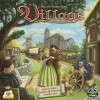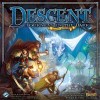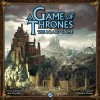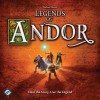
Fnoffen
gamer level 6
7324 xp
7324 xp
followers
6
6
Use my invite URL to register (this will give me kudos)
https://boardgaming.com/register/?invited_by=fnoffen
profile badges




recent achievements

Inspector
Follow a total of 30 games
Follow a total of 30 games

Vanguard
Give 250 hearts (loyalty points) to a single game
Give 250 hearts (loyalty points) to a single game

Gamer - Level 6
Earn Gamer XP to level up!
Earn Gamer XP to level up!

Veteran Grader
Grade 800 more reviews or tips by clicking "Yes" or "No" in response to the question "Was this helpful?"
Grade 800 more reviews or tips by clicking "Yes" or "No" in response to the question "Was this helpful?"
Player Stats
Critic (lvl 1)
235 xp
235 xp
Explorer (lvl 4)
1849 xp
1849 xp
Professor (lvl 2)
573 xp
573 xp
Reporter (lvl 1)
240 xp
240 xp
About Me
Started out, way back when, with RPGs (mostly Swedish ones like Mutant, Drakar & Demoner and Western) and fantasy themed board games such as HeroQuest and the original Drakborgen (which has recently been remade by Fantasy Flight games to fit into the Terrinoth setting under the name of DungeonQuest).
From there I've been dipping my toes (and most of my other body parts) into Magic the Gathering and slipped more and more away from RPGs and into the epic board game scene, with Twilight Imperium 3rd edition as my epitome of ultimate board gaming experience.
Although in later times I have started to appriciate the easy access of lighter board gaming as it is always easier to find players willing to commit to a two-hour game rather than the eight-to-twelve hour spectacular that is TI3.
These days I don't have as much time for gaming as I'd like due to becoming the father of two longed for children. I would never trade back, mind you. And besides, they'll make good opponents when they grow up...



































































Portobello Market
Portobello Market is, for all intents and purposes, a 2-4 player worker placement game. Or rather a workplace placement game…
The goal of the game is to get the most victory points(VPs). These are a gained in one of two ways: Fill a street or place an action token. There is also a final scoring round when the end game condition is met. Also, you start with 10 VPs since you can use them to move the Bobby. More on him later.
You start the game with a number of market stalls based on the number of players. You also have three action tokens(ATs) of value 2, 3 & 4. The 2 and 4 also fill another purpose: extra points. This will also be covered later.
The main avenue (pun intended) to gain points is to fill a street. To do so you place your stalls on them. You may place one stall for each action you have this round. You choose the number of actions by flipping over your 2, 3 or 4 AT to get that many actions. When all three have been flipped over and spent you flip them back over, ready to be spent again next turn.
The thing is that you can’t place your stalls however you wish.
If you, or another player, have started to build on a street, you have to continue from the same end and are not allowed to start at the other end. Which is a tad boring since all the good spots (i.e. those that give the highest score) are located at the ends of all streets, close to the squares.
You also must be supervised by the Bobby, meaning that you can only build stalls on one of the three streets surrounding the city block that he’s currently on. You may, as a free action (not spending any action points) move the Bobby across a street by spending 1 (or more) VPs per street crossed. These VPs are given to whichever player (or players in case of a tie) have the majority of stalls on the street you want to cross. If there are no stalls on the street you simply loose 1 VP.
You score a street when it has been filled with stalls and have market visitors in the squares on both ends. The visitors come in three varieties: 5 commoners, 5 gentries and 1 noble. A filled street gives points to all players who have one or more stalls on it equal to the point value of their stall spots multiplied by a factor based on what type of visitors are on each end. Two commoners give 1 time the VPs, One commoner and one gentry give 2 times the VPs, two gentry or the noble and one commoner give 3 times the VPs and the noble and a gentry give 4 times the VPs.
How then does the visitors come into play? From the start, you place the commoners and the gentries in a bag. Instead of placing a stall, you may choose to draw a random visitor from the bag and place it on an empty square. So naturally you want gentry on your street ends and commoners on your opponents street ends. When all commoners and gentries have been placed, you place the noble on the remaining empty square.
The secondary way to gain VPs is to, instead of flipping your 2 or 4 AT to gain that amount of actions, place the AT on a city block and score the amount of VPs equal to stalls of your color on the three streets around it multiplied by the value of the AT, 2 or 4. Only you score this way. This might seem like a bad choice since then you have less actions but fret not. When you use an AT this way, you get a new one. There is a pile of generic ATs with four 1s, two 2s and two 3s on them. These are organized with all the 1s on the bottom, the 2s in the middle and the 3s on top. Since you always take the top AT from this pile, it pays to be first to score with an AT. If you use your 2 AT first, you even get more total actions since you might get a 3 AT instead.
The game ends when a player places his or her last stall.
To summarize: It might seem like a fiddly way to score but the general gist of the game is easy to understand and teach yet difficult to master. A full four-player game rarely last more than 45 minutes so it can easily be played to best out of three. Which is why I will end this review by reiterating the title: A good filler for any group.